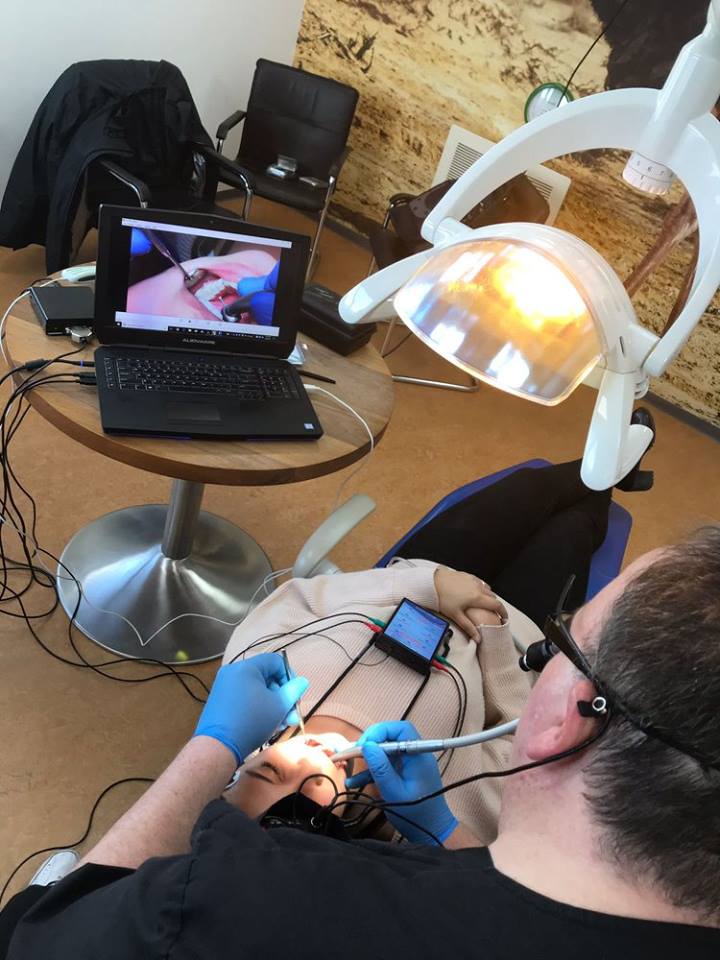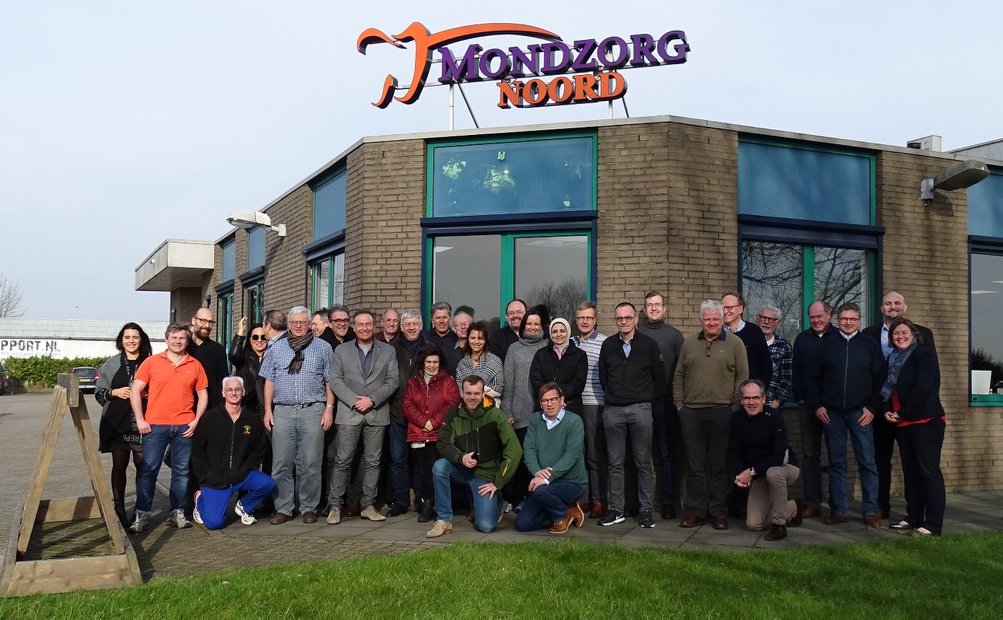DTR Summit Recap: Seeing is Believing

On the weekend of February 8-9, dentists descended on Groningen, the Netherlands to take part in a DTR Summit—a course to learn a minimally invasive way to diagnose and treat patients experiencing TMD signs and symptoms. Disclusion Time Reduction (DTR) Therapy is managed through digital occlusion and biometric technology to understand the occluso-muscular relationship. Drs. Robert Kerstein and Ben Sutter from the United States took the lead in sharing this methodology through a combination of lecture, live patient treatment, and hands-on workshops. We circled back with them after the jet lag wore off, to find out what were some of the best moments of the weekend.
Dr. Sutter: “When I was working on a live patient, Dr. Kerstein witnessed a doctor who was apprehensive about putting her own daughter through this therapy—instead leaning toward a multi-year plan of orthodontia and bonding. Shortly after, the patient I was working on felt immediate symptom relief, saying, ‘Wow, my whole face and jaw feel relaxed.’ That same doctor who wouldn’t let her daughter undergo the DTR bite revision reversed herself and asked me if I would treat her next. Amazing how quickly minds can change once you see it with your own eyes.”
Dr. Kerstein: “To add to Dr. Sutter’s story, that same doctor also experienced TMD signs and symptoms. When we got her in the chair and recorded her occlusion/disclusion times and took EMGs, we discovered she had a long disclusion time with muscles firing post-disclusion. With this technology, you can show people objective data—not just speculation. It’s a powerful tool.”
Jen Cullen, Business Development Manager for Tekscan Dental, was at the course to experience the activity first-hand. “I’ve attended a lot of CE programs but this course is unique. The attendees were very engaged and learned a lot about the research and practical applications of DTR. The coolest part is seeing a patient that is struggling with pain, then come in the next day after treatment and say that they slept amazing and didn’t wake up with a headache for the first time in 3 years. Pretty cool for the dentists attending the course to see this amazing result! The team at Easier Dental did an excellent job with organizing this course to create a great experience for everyone!”
 DTR Therapy uses the T-Scan™ digital occlusal analysis system to measure the impact of excursive movements on the occlusal plane. The goal is to identify contacts that may be overly engaging during excursive movements, a problem that can lead to hyperactive muscles, breakage, and TMD symptoms. The clinician evaluates the time it takes for posterior teeth to disengage during excursive movements and correlates the occlusal data to muscle activity in real time.
DTR Therapy uses the T-Scan™ digital occlusal analysis system to measure the impact of excursive movements on the occlusal plane. The goal is to identify contacts that may be overly engaging during excursive movements, a problem that can lead to hyperactive muscles, breakage, and TMD symptoms. The clinician evaluates the time it takes for posterior teeth to disengage during excursive movements and correlates the occlusal data to muscle activity in real time.
To learn more, check out the DTR Summit courses being offered in 2018.
Previous Post: | Next Post: |
